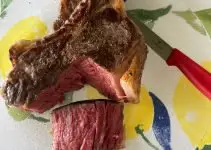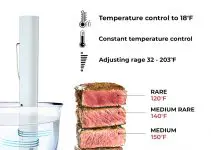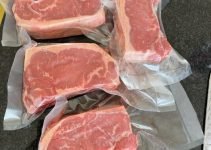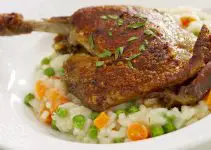Sous vide cooking and slow cooking are both gentle heat, long cook-time methods for producing tender, perfectly cooked foods. However, there are differences between how they work and what they are best at preparing. Read on to learn about the history of slow cooking, how it works, and how it compares to sous vide cooking.
History of slow cooking
The slow cooker was invented about 80 years ago, as a way for meals to be prepared for Sabbath dinner.1 They became popular in the 1970s under the name Crock-Pot, as a way for women to balance work and home as they began to enter the workforce. Today, they are one of the most common home cooking tools, and come in a variety of styles; the Instant Pot is a pressure multi-cooker that can also work as a slow cooker, and has become a household name as much as the Crock-Pot.
Mechanism of a slow cooker
A slow cooker has a heating element at the base of the machine, and plugs into an outlet. It has a vessel that sits inside where the food is cooked, which is usually made from porcelain or ceramic. As the cooker heats from the bottom, it heats up the cooking vessel, which in turn cooks the food housed inside. On most newer models, the vessel inside can be removed for easy and safer clean up. And that’s it! The design is fairly simple.
Most slow cookers have only a few settings; warm, low, and high. Contrary to what I previously assumed, there are not different temperatures for the low and high settings; The low setting will eventually reach the same temperature as the high setting, but the length of time is longer. The Crock-pot website states that the preset temperature on their machines is 209 degrees; this is right below boiling, considered “simmering”. This is why slow cooker recipes typically say “4 hours on high or 6-8 hours on low”. Interestingly, even though a slow cooker’s temperature can’t be adjusted, the temperature range inside of a slow cooker can vary greatly, depending on what is being prepared. Water transfers heat 10 times better than dry heat (like an oven), so a soup or stew may cook at a higher temperature than something like a roast.
The steam that builds up inside of a slow cooker is what helps to keep food tender. The heat breaks down collagen and proteins and cell structures, rendering tender, shredded meat and soft vegetables.
Slow cooking compared to sous vide cooking
- Sous vide cooking and slow cooking both cook food for longer periods of time at lower temperatures.
- Sous vide cooking uses a circulator to heat water, which in turn slowly and gently cooks food that is sealed in bags. This is a lower heat than a slow cooker, and is more specifically controlled (often with less than one-degree variance).
- Slow cookers are great for making meals that can cook all day; think of stew or a tough beef roast. They can also be used to slowly heat dips or other items that need gentle heat; for instance, cheese dip, spinach dip, or other cream-based dips are difficult to make on the stove top without the risk of burning or scorching. Using a slow cooker helps to alleviate some of that; the slow cooker’s gentle, low heat is perfect for melting cheese or making a bubbly, creamy dip without curdling the mixture. There is a time limit, though; if you’ve ever made a dip in the slow cooker, you may notice that quality of the dip starts to decline the longer that its cooking.
- This is opposite of sous vide, because sous vide cooking is an even lower temperature than slow cooking. Sous vide cooking wouldn’t be ideal for holding a dip or other item once it’s prepared, but could be used for the initial preparation. For instance, ingredients for a cheese dip or spinach dip could be sealed in a bag and heated through using the sous vide method. They could then be served, but wouldn’t necessarily stay warm.
- Sous vide is great for making meats that are tender but still juicy, but doesn’t cook hot enough to produce the stringy, shredded texture that is usually characteristic of slow cooked meats.
Both cooking methods have their place in the kitchen, but one of the great similarities of sous vide and slow cooking is that they are hands off and easy as pie!
Contributor:
This article was written by Stephanie Searor, MS RD LDN
Reference:






